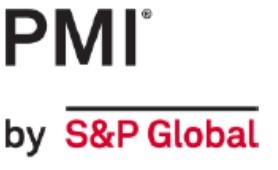August was another poor month for manufacturing globally, at least as it is reflected in the Purchasing Managers’ Index (PMI) data released this week. The global PMI compiled by J P Morgan using the data from S&P Global fell to 50.3, its lowest reading since the same level was recorded in July 2020. Within the overall index, output fell at a global level and this was spread across the consumer, intermediate and investment goods sub-sectors. There was also a negative trend for orders and the only good news is an easing in input prices.
The UK manufacturing PMI fell sharply compared to its July reading and, at 47.3, this is the first negative value since the initial phase of the pandemic which had followed a run of seven sub-50 figures from May to December 2019. While this is above the flash PMI number we reported last week, this is where the good news ends, with manufacturing production falling significantly across all the sub-sectors. In turn, this reflects a sharp downturn in orders from both domestic and export markets and reports of customers postponing or cancelling orders in the face of increased uncertainty, recession warning sand component shortages. For export orders, port congestion, supply chain issues and Brexit complications added to the woe.
In the Euro-zone, there was only a very slight reduction in the manufacturing PMI reading, although as it had slipped below 50 in July, this is the 2nd consecutive negative reading (at 49.6). The output element was again well below the crucial 50 level and new orders also declined sharply, with weak demand the major drag on activity causing manufacturers cut back their purchasing although this did have the effect of reducing the delays in suppliers deliveries.
Two Euro-zone countries – France and Spain – managed to improve on their July PMI readings but while this took France back into positive territory, Spain remained just a fraction below the crucial 50 level. Apart from this, only Netherlands and Ireland have a manufacturing PMI above 50 and the other 4 Euro-zone countries covered by the report (Germany, Austria, Greece and Italy) all saw sharper downturns, with the latter having the weakest PMI in the region.
The other EU countries were also generally on a negative trend with Poland seeing a further deterioration of its already weak PMI (at 40.9 this is the lowest reading in our report) and Sweden reporting a large reduction but remaining positive (50.8); the PMI for Hungary’s manufacturers slipped slightly but they now have the strongest reading globally (57.8) and the Czech Republic saw no change from its July reading, although that had been significantly negative (46.8).
Among the non-EU countries, Switzerland saw its PMI reading fall but remain relatively strong at 56.4 and both Turkey and Russia saw a modest improvement on the July figure although for Turkey (47.4) it remains firmly in negative territory while Russia saw the largest improvement compared to July – up 1.4 points to 51.7.
All of the Asian countries that we cover saw their manufacturing PMI fall compared to the July reading with the largest reductions being in South Korea and Taiwan which saw already negative values decline further; however, perhaps the most significant change was in China which slipped back below 50 for the first time since May as power cuts and temporary factory closures weighed on output and sales. Japan and India both still have positive readings despite the reduction in August.
Finally we turn to the Americas where, in Canada, we find the largest reduction in the manufacturing MI compared to July – there was a fall of 3.8 points to 48.7, their lowest level since the on-set of the pandemic. Brazil and the USA also had lower PMI readings but in these cases the index was still above the crucial 50 level and while Mexico had no change in its PMI reading, their level continues to be negative.
The S&P Global PMI reports for major economies around the world are available from their website at https://www.pmi.spglobal.com/Public/Release/PressReleases and our summary charts report is available to download below. You should note however, that the PMI readings for Hungary, Sweden and Switzerland are compiled independently and not on this site but they can be found with an appropriate internet search.

